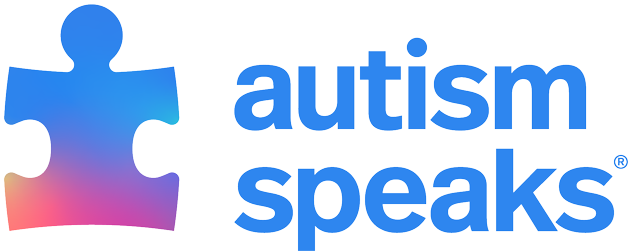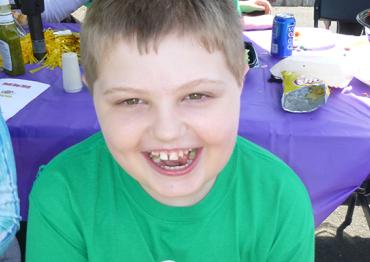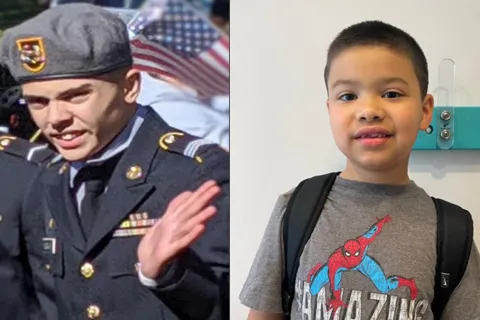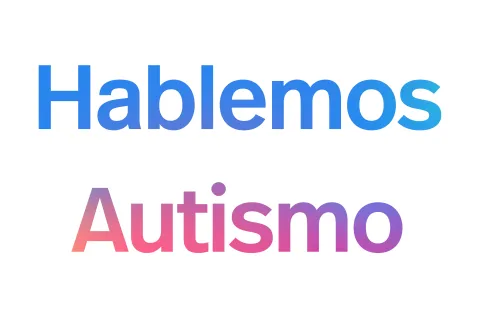Back to school: 17 Tips to help autistic kids
By Kimberlee Rutan McCaffertyThis is a post by Kimberlee Rutan McCafferty, mother to two sons on the autism spectrum and an Autism Family Partner at the Children’s Hospital of Philadelphia (CHOP). Kim is also the author of a blog about her two children with autism.
Summer vacation is ending all too fast, and before we know it those bright yellow school busses will be darting through our neighborhoods and a new school year will commence. Moving to a different classroom, grade, or school can be stressful for any child; for those on the autism spectrum, handling anxiety about the unknown can be exceedingly difficult. These fears can be reduced by taking small steps to familiarize your child to his or her new situation prior to the beginning of the school year. I’ve used many of these strategies over the years with both of my autistic boys, who are on different ends of the autism spectrum. Of course all children are unique, so some may work better than others. I’ve actually revisited several that haven’t worked in the past and found them to be helpful as the boys grew older.
Below are some tried and true tips that have helped my kids make a smooth transition in September, and have helped them to start a new school year successfully.
17 Back to school tips to help autistic kids
- Talk to your child frequently about what to expect in the upcoming year. It’s the simplest tip, and perhaps the most important one to help reduce your child’s anxiety.
- Cross days off on your calendar. Some children may have anxiety about when the school year begins. Simply crossing days off the calendar may help your child better understand when the school year starts.
- Create a new morning routine and practice it prior to the start of the school year. Begin waking up your child a little earlier each morning so that he or she is acclimated to the new wake-up time way before that big first day. Do a few “run-throughs” near the end of summer vacation so your child knows what to expect in the time before leaving for school. If your child responds well to visual schedules, you might create one outlining everything from getting dressed to going on the bus.
- Take a tour of the school. This can be arranged with the case manager of your child study team. You may not get to meet your child’s new teacher this early, but at least your child will become familiar with the building prior to attending. When you are on your tour, visit the main office, bathrooms, cafeteria, gym, library, playground, and any room your child may spend time in during the coming year. Take pictures on your tour and incorporate them into a social story afterwards so that you and your child can review it during the summer (a social story is a book that a parent or caretaker creates to explain in written and/or pictorial detail what the child should expect for an upcoming event).
- Walk through emergency procedures on your visit. Many children on the spectrum have difficulty with loud noises and breaks in routine. If possible, when on your tour, have your case manager show your child where to go and what to do during any emergency scenario. Doing this will help your child be prepared, and he or she might find it fun to have mom or dad practice standing along silently.
- Create a daily school schedule for your child. You may not know the exact routine, but even walking through one day may make your child feel more at ease. If possible, ask your case manager to acquire the present year’s schedule prior to your tour, and have your visit at the school follow that schedule.
- If at all possible, have your child meet the teacher prior to the start of school. Remember to take his or her photo and add it to your social story.
- Write a letter outlining your child’s strengths, weaknesses, possible sensory issues, dietary restrictions, and favorite reinforcers. If possible, have your child help you create this document, as it will be invaluable input for school staff. Be sure to include a few things that are fun and unique about your child. A copy of this letter (one to two pages maximum) should go to your child’s teacher and aides, but should also be made available to any staff who work with your child. Remember to send a copy to the principal, assistant principal, occupational therapist, physical therapist, speech therapist, physical education instructor, music teacher, etc. It is very helpful to teachers to have a “snapshot” of your child prior to instructing him or her. Don’t hesitate to brag as well!
- If appropriate, make certain a behavior plan is in place day one. If your child has a plan that’s been working for him or her, ask that it be shared with his or her new teacher and implemented immediately at the start of the year.
- If your child uses an augmentative device to communicate, make sure all the adults in his or her classroom are familiar with it. Many augmentative devices require some instruction on how to use them. At the very least, the teacher should be familiar with the device prior to the fall. All the aides who will work with your child should be trained as well, and there should be a plan in place so that all are comfortable using the device within the first few weeks of school.
- If your child has sensory issues make sure he or she has a favorite sensory item available from the first day. For those children on the spectrum who struggle from sensory overload, certain objects can offer a great deal of comfort. Make sure your child will have at least one available at all times.
- Ask to meet the bus driver. Many bus drivers take a practice run the last week of summer vacation. Request a “meet and greet” with your driver so your child feels comfortable riding the bus on that first day. You can even ask if you and your child can do a ride-along to the school as some drivers are amenable to that request.
- After the school year begins be on top of your child’s progress. Make contact with all of your child’s instructors in the first few weeks of school. This enables you to track how your son or daughter is progressing and lets school staff know you are interested and invested in your child’s success.
- Write a thank-you note to your child’s teacher and principal. If the first few weeks go smoothly for your child, it never hurts to thank those responsible for a smooth transition.
- If possible, volunteer. Your presence at school sends the message that you are actively involved in your child’s education. Also, (for the most part) children love to see their parents at school. You will score points for being there!
- Ask for help. Requesting assistance shows that you are willing to learn and to try new things to help your child.
- Last, but definitely not least, try to relax. All children can pick up on their parents’ anxiety. If you can keep yours in check, it will help your child stay more calm on that all-important first day and through the school year.
Have a great year!
Everyone deserves the chance to reach their full potential. We need your help to tell lawmakers that improving education for children and young adults with autism is a priority for our community. Learn more about how you can get involved and help Autism Speaks.










